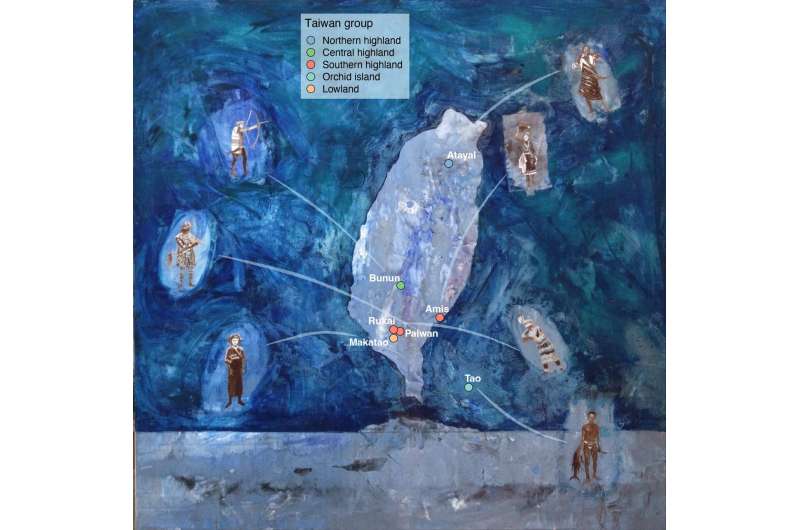This article has been reviewed according to Science X's editorial process and policies. Editors have highlighted the following attributes while ensuring the content's credibility:
fact-checked
peer-reviewed publication
proofread
Genetic analysis of Indigenous Taiwanese peoples sheds light on Austronesian expansion

The Austronesian language family is one of the largest in the world, comprising more than 1,200 languages spoken from Madagascar to Hawaii. Dang Liu, Albert Min-Shan Ko and Mark Stoneking collected genome-wide data from 55 individuals from seven Taiwanese Austronesian groups and two Han-Taiwanese groups to study the genetic structure of Taiwan, the point of origin for all Austronesian-speaking peoples.
There are over 20 different Indigenous groups in Taiwan, divided into "highland" and "lowland" peoples. Many lowland peoples have intermarried with Han people, and their languages are endangered or extinct. For example, the lowland Makatao showed Han admixture dated within the past 100 years. A highland group known as the Atayal showed the most distinctive genetic profile, suggestive of considerable isolation from other groups in the last 3,000 years.
By including published ancient genomes in their analyses, the authors inferred little divergence between the Into- and Out-of-Taiwan groups, with the latter and the present day highland groups showing additional interactions from northern East Asia. The work is published in the journal PNAS Nexus.
Austronesian people from outside Taiwan are most closely related to southern highland peoples in Taiwan. Exactly which Indigenous group is the parent of the Austronesian diaspora is still up for debate. Haplotype-based results suggest that the Amis are the source population, which accords with a recent linguistic analysis.
However, a different approach, allele-based f4 comparisons, show that the Rukai share more ancestry with groups that left Taiwan than the Amis. The authors speculate that haplotype-based results for the Amis might reflect recent back-migration and contact. According to the authors, the results of the study demonstrate the importance of considering genetic structure within Taiwan when making inferences about the Into and Out of Taiwan events.
More information: Dang Liu et al, The genomic diversity of Taiwanese Austronesian groups: Implications for the "Into- and Out-of-Taiwan" models, PNAS Nexus (2023). DOI: 10.1093/pnasnexus/pgad122
Journal information: PNAS Nexus
Provided by PNAS Nexus



















